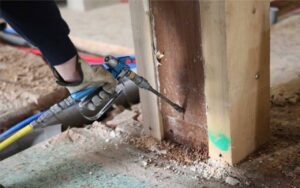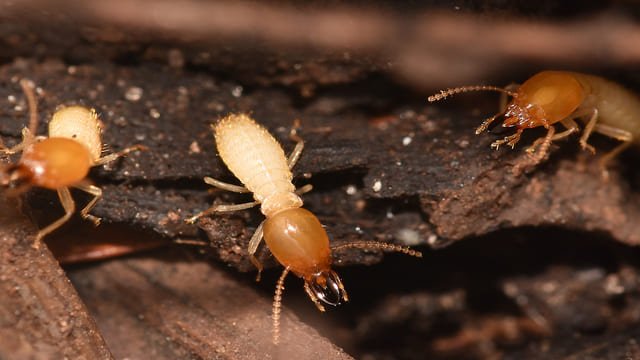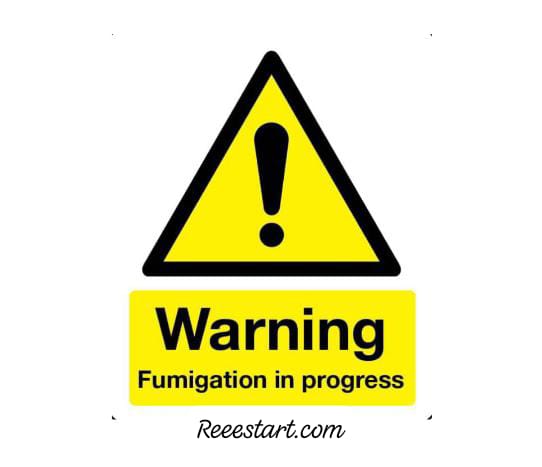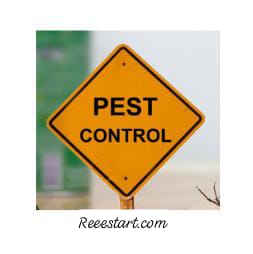Effective Termite prevention poses a significant challenge, making preventive measures crucial to avoid the pervasive damage these pests can inflict. Implementing a multi-faceted, professionally orchestrated prevention strategy is essential for maintaining the integrity and longevity of your home. Below, we detail an exhaustive guide to termite prevention, encompassing both pre-construction and ongoing maintenance measures.
Effective Termite Prevention
Termites can cause significant damage to homes and structures, often going unnoticed until substantial harm has occurred، Effective termite control requires a combination of prevention, detection, and treatment strategies.
Eliminating Cellulosic Materials and Plant Residues
It can be done through the following:
Initial Site Preparation
Before construction begins, ensure that all cellulosic materials, such as wood debris, tree stumps, and plant residues, are completely removed from the site. These are prime attractants for termites and their removal significantly lowers the risk of infestation.
Survey and Removal
Engage a professional surveyor to identify potential termite-prone areas and ensure they are cleared. This preliminary step is critical for avoiding future complications.
Treating Building Foundations and Construction Wood
Pre-construction Treatments include the following:
Foundation Treatment
Apply appropriate termite insecticides to the foundation of concrete buildings before proceeding with construction. This creates a protective barrier that hinders termite entry.
Wood Treatment
All wooden components used in construction, such as framing lumber, should be treated with long-lasting, effective termite-resistant chemicals. These treatments are vital to ensuring that the primary structure remains termite-free.

Inspection Prior to Permit Issuance
Pre-approval Inspection include the following :
- Mandatory Land Inspection, Before issuing a building permit, mandate that specialized professionals conduct a thorough inspection of the land. In the event of an infestation, the area should be properly treated before construction is approved.
Early Detection Using Termite Traps
- Termite Traps
Utilize termite traps constructed from water-soaked cardboard to monitor for signs of termite activity. These traps can help in the early detection and provide cues for timely intervention.
Chemical Treatment for Construction Woods
Insecticidal Wood Treatment
Treat all wood used for windows, doors, and similar susceptible areas with an insecticidal solution dissolved in kerosene at a precise concentration of 1%. This preemptive measure serves as a first line of defense against termite intrusion.
Proper Storage Methods
Warehouse Precautions
For the storage of grains and other valuable materials, employ pallets treated with insecticides. This ensures that storage structures themselves do not become termite havens.
Maintaining a Dry Environment
Preventing Moisture Accumulation
Regularly check for and repair any plumbing leaks both within and around the home. Ensure that air conditioning units are functioning properly and do not contribute to unwanted moisture.
Site Drainage
Construct site drainage systems that effectively divert water away from the home’s foundation.
Minimizing Wood-to-Ground Contact
Structural Design Adjustments
Reduce direct contact between wood and the ground wherever feasible. For example, elevate wooden structures on concrete or metal supports.
Soil Replacement with Sand
Barrier Construction
- Sand Barriers،In locations where wood must come into contact with soil, consider replacing the surrounding soil with sand.
- Termites are unable to tunnel through sand, thus this acts as an effective physical barrier.

Avoiding Enticing Conditions
Wood Pile Management، Avoid stacking firewood or lumber against your home’s exterior. Regularly remove tree stumps, dead plants, and any other potential feeding sites from your yard.
Maintaining Wood Clearance
Maintain at least a 6-inch gap between soil and wooden parts of the building such as floors, decks, and patios. This space acts as a deterrent to termite access.
Using Termite-Resistant Materials
Smart Material Choices
- Resistant Wood Types
Opt for termite-resistant wood in areas that require ground contact. Pre-treatment of these woods during new construction or renovations will greatly reduce the likelihood of infestations.
Regular Maintenance Cleaning and Inspections
- Routine Gutter Cleaning
- Water Flow Management
Ensure that gutters and downspouts are cleaned regularly and functional, thereby preventing water accumulation which can attract termites.
Consistent Home Inspections
- Schedule regular home inspections to identify and address potential termite issues before they escalate.
- Professional inspections can uncover hidden problems that might not be visible to the untrained eye.
Covering External Openings
- Physical Barrier.
- Mesh Installation.
Cover any external openings in your home’s structure with durable, termite-resistant steel mesh. This prevents termites from entering while allowing necessary ventilation.
By integrating these comprehensive strategies, you can ensure your home remains resilient against termite threats. A well-rounded preventive approach not only safeguards your property but also provides peace of mind, knowing you have proactively addressed potential vulnerabilities. Regular maintenance coupled with professional interventions where necessary will fortify your defenses against these destructive pests.




